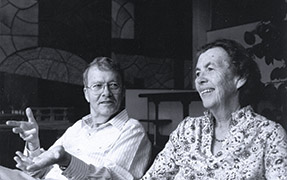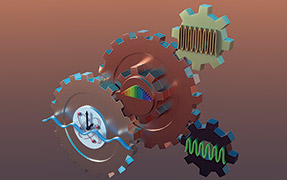Toward digitizing a century of astronomical full-sky images at Harvard
From the early 1880s to the late 1980s, stargazers from the Harvard College Observatory exposed over 500,000 astronomical photographic images of (typically) 5° × 5° fields of the night sky. Most of the collection is in the form of 8 × 10in. glass photonegatives of the sky taken at Harvard telescopes around the world, covering the full northern and southern sky. This collection represents more than 25% of the total cataloged and stored astrophotographs in the world, and is by far the largest collection of its type. However, in its current analog form, the collection is much underutilized because modern computerized analysis tools cannot examine it.
The Digital Access to a Sky Century from Harvard (DASCH) project team hopes soon to realize a longtime ambition to digitize this collection. Until now, the technology for digitizing and storing such an enormous collection was either not available or prohibitively expensive. In eventual digital form, we expect the database to be about 1.5PB (petabytes). The first step we have taken toward this goal is developing, with National Science Foundation support, a specialized, ultra-high-speed, high-resolution, high-accuracy digitizer, shown in Figure 1.

Digitizing this large collection within a 5-year time frame requires a machine1 that can digitize a plate to a resolution of 2300dpi (11μm pixels) in less than a minute, including manual loading and unloading (robotic loading is not feasible given plate variations and fragility). As it scans two plates at a time, the machine generates, in 90s, about the same amount of data as contained on a DVD for a typical hour-and-a-half movie.
The digitizer has to meet the requirements for astronometric (star position and proper motion) and photometric (star magnitudes or brightness in an optical passband) science, as well as archival preservation (moving all of the information accurately from one medium to another). This translates into measuring star centroids on the glass plate to submicron accuracies, measuring star diameters as small as 30μm, and capturing pixel data with 12 bits of dynamic range. The machine must hold glass plates of various, and often nonuniform, thicknesses. Some plates have roughly cut edges that are not square, and some have been repaired by attaching another glass plate with tape.
The digitizer is based on an Aerotech ABL9000 air-bearing granite table, with linear servo motors, customized for a travel of 460mm in the X direction and 380mm in the Y direction. The table can move 50lbs a distance of 25mm in 350ms, and settle to within 0.2μm of the desired position. The X–Y table moves a plate holder underneath a CCD camera (4K × 4K pixels, 12 bits) with a 1:1 telecentric lens that images a glass plate emulsion surface illuminated by a pulsed light source below.
The camera has no mechanical shutter, so exposures are adjusted by controlling the width of the pulse to the light system. The illumination comes from four LED arrays, from Lamina, that have 117 LEDs each in a one-square-inch area. When pulsed—typically for 8ms—the combined array output is the light equivalent of a 150W incandescent bulb.
Each of the 60 overlapping frames taken for an 8 × 10in. plate generates 32MB of data. The scan pattern yields two complete images of the plate at the rate of 1.9GB in 45s. We write this data to an array of disks operating in the RAID 10 configuration (striped and mirrored), and follow with offline processing to create a mosaic image of the whole plate. Included in this processing is averaging the two images to smooth out pixel-to-pixel variations.
The imaged stars are then matched to a catalog, and the sky coordinates of the plate center are determined. Further characterizations include the isophotal diameter and density of each star and, when possible, magnitude calibration based on photometric catalogs. This will facilitate our primary science goal of measuring the variability of stars and quasars on timescales ranging from hours to decades, which will be based on ∼500–1000 images of each feature.
Building the digitizer was a first step toward converting a very large analog database of the sky to digital form. This stride traversed the century that saw chemically based photography transform the science of astronomy and create the science of astrophysics. Our next step is to find the funding to digitize the ∼500,000 plates and put them into online storage.
The rewards of this labor are expected to be great, as they already have been from painstaking visual analysis of just a small fraction of these plates. For example, the period-luminosity relation of Cepheid variable stars found nearly 100 years ago led to the fundamental discovery of the cosmic distance scale. One immediate benefit of our proposed efforts will be the ‘instant’ expansion of the current ∼20-year (since c. 1985) digital record of the partial sky to a full-sky century. Another will be the long-term context needed for digital sky surveys planned for the coming decade, such as the Large Synoptic Survey Telescope project.
We are grateful for the support of the National Science Foundation, through NSF grant AST-0407380, which has enabled the development of the DASCH project thus far.
Robert Simcoe is a 35-year veteran of the computer and networking industry. He volunteered to work on this project several years ago and was the principal designer of the digitizer hardware.



